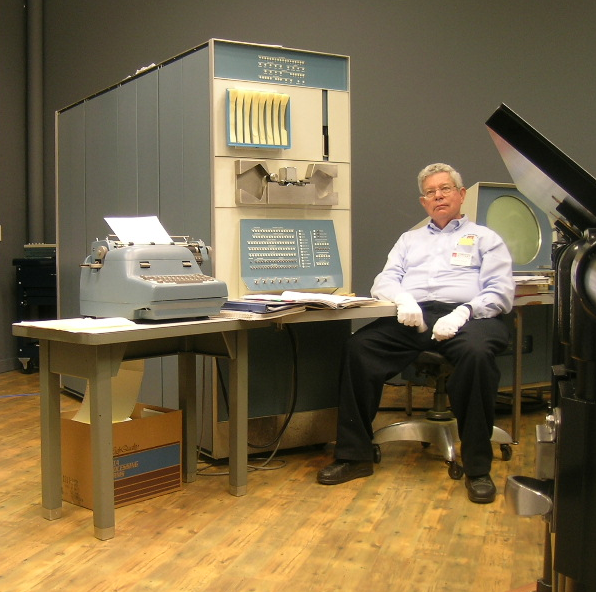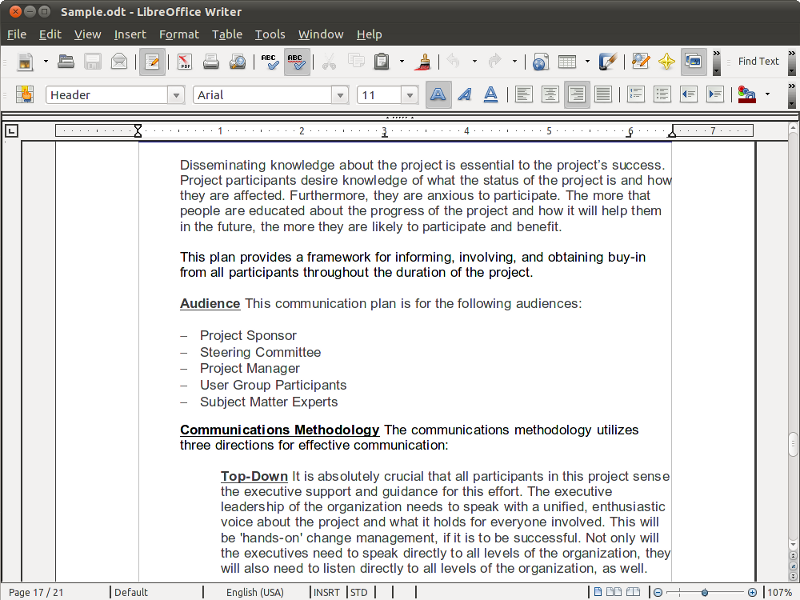 |
Programmed Data Processor
Programmed Data Processor (PDP), referred to by some customers, media and authors as "Programmable Data Processor," is a term used by the Digital Equipment Corporation from 1957 to 1990 for several lines of minicomputers. The name "PDP" intentionally avoids the use of the term "computer". At the time of the first PDPs, computers had a reputation of being large, complicated, and expensive machines. The venture capitalists behind Digital (especially Georges Doriot) would not support Digital's attempting to build a "computer" and the term "minicomputer" had not yet been coined. So instead, Digital used their existing line of logic modules to build a ''Programmed Data Processor'' and aimed it at a market that could not afford the larger computers. The various PDP machines can generally be grouped into families based on word length. Series Members of the PDP series include: ;PDP-1: The original PDP, an 18-bit computing, 18-bit four-19-inch rack, rack machine used in early tim ... [...More Info...] [...Related Items...] OR: [Wikipedia] [Google] [Baidu] |
 |
PDP-1
The PDP-1 (Programmed Data Processor-1) is the first computer in Digital Equipment Corporation's PDP series and was first produced in 1959. It is known for being the most important computer in the creation of hacker culture at the Massachusetts Institute of Technology, Bolt, Beranek and Newman, and elsewhere. The PDP-1 is the original hardware for one of the first video games, Steve Russell's 1962 game '' Spacewar!.'' Description The PDP-1 uses an 18-bit word size and has 4096 words as standard main memory (equivalent in bit size to 9,216 eight-bit bytes, but in character size to 12,388 bytes since the system actually divides an 18-bit word into three six-bit characters), upgradable to 65,536 words. The magnetic-core memory's cycle time is 5.35 microseconds (corresponding roughly to a clock speed of 187 kilohertz); consequently most arithmetic instructions take 10.7 microseconds (93,458 operations per second) because they use two memory cycles: the first to fetch the instruc ... [...More Info...] [...Related Items...] OR: [Wikipedia] [Google] [Baidu] |
|
Hacker Culture
The hacker culture is a subculture of individuals who enjoy—often in collective effort—the intellectual challenge of creatively overcoming the limitations of software systems or electronic hardware (mostly digital electronics), to achieve novel and clever outcomes. The act of engaging in activities (such as programming or other media) in a spirit of playfulness and exploration is termed ''hacking''. However, the defining characteristic of a hacker is not the activities performed themselves (e.g. programming), but how it is done and whether it is exciting and meaningful. Activities of playful cleverness can be said to have "hack value" and therefore the term "hacks" came about, with early examples including pranks at MIT done by students to demonstrate their technical aptitude and cleverness. The hacker culture originally emerged in academia in the 1960s around the Massachusetts Institute of Technology (MIT)'s Tech Model Railroad Club (TMRC) and MIT Artificial ... [...More Info...] [...Related Items...] OR: [Wikipedia] [Google] [Baidu] |
|
 |
Lockheed A-12
The Lockheed A-12 is a retired high-altitude, Mach 3+ reconnaissance aircraft built for the United States Central Intelligence Agency (CIA) by Lockheed's Skunk Works, based on the designs of Clarence "Kelly" Johnson. The aircraft was designated A-12, the twelfth in a series of internal design efforts for "Archangel", the aircraft's internal code name. In 1959, it was selected over Convair's FISH and Kingfish designs as the winner of Project GUSTO, and was developed and operated under Project Oxcart. The CIA's representatives initially favored Convair's design for its smaller radar cross-section, but the A-12's specifications were slightly better and its projected cost was much lower. The companies' respective track records proved decisive. Convair's work on the B-58 had been plagued with delays and cost overruns, whereas Lockheed had produced the U-2 on time and under budget. In addition, Lockheed had experience running a "black" project. The A-12 was produced ... [...More Info...] [...Related Items...] OR: [Wikipedia] [Google] [Baidu] |
|
Radar Cross Section
Radar cross-section (RCS), denoted σ, also called radar signature, is a measure of how detectable an object is by radar. A larger RCS indicates that an object is more easily detected. An object reflects a limited amount of radar energy back to the source. The factors that influence this include: *the material with which the target is made; *the size of the target relative to the wavelength of the illuminating radar signal; *the absolute size of the target; *the incident angle (angle at which the radar beam hits a particular portion of the target, which depends upon the shape of the target and its orientation to the radar source); *the reflected angle (angle at which the reflected beam leaves the part of the target hit; it depends upon incident angle); *the polarization of the radiation transmitted and received with respect to the orientation of the target. While important in detecting targets, strength of emitter and distance are not factors that affect the calculation o ... [...More Info...] [...Related Items...] OR: [Wikipedia] [Google] [Baidu] |
|
 |
Waltham, Massachusetts
Waltham ( ) is a city in Middlesex County, Massachusetts, United States, and was an early center for the labor movement as well as a major contributor to the Technological and industrial history of the United States, American Industrial Revolution. The original home of the Boston Manufacturing Company, the city was a prototype for 19th century industrial city planning, spawning what became known as the Waltham-Lowell system of labor and production. The city is now a center for research and higher education as home to Brandeis University and Bentley University. The population was 65,218 at the 2020 United States census. Waltham is part of the Greater Boston area and lies west of Downtown Boston. Waltham has been called "watch city" because of its association with the watch industry. Waltham Watch Company opened its factory in Waltham in 1854 and was the first company to make watches on an assembly line. It won the gold medal in 1876 at the Philadelphia Centennial Exposition. The ... [...More Info...] [...Related Items...] OR: [Wikipedia] [Google] [Baidu] |
 |
System Module
System Modules (originally known as System Building Blocks; the name was changed around 1961) are a DEC modular digital logic family which preceded the later FLIP CHIPs."Digital Logic Handbook", pg. 56 They connect to the units they are plugged into via a set of 22 gold-plated discrete pins along one edge."System Modules", pg. vii They use transistor inverter circuits, with the transistors operating saturated, to avoid dependence on tight tolerances; they use -3V and 0V as logic levels. Intended for prototyping as well as production, they include design features intended to avoid damage. They are provided with design advice which includes loading rules and wiring instructions."System Modules", pg. 4.1-4.9 They were available in several compatible speed lines: * 4000-Series: the second series, nominally 500 KHz, but some 1 MHz"System Modules", pg. 6.1-6.40 * 1000-Series: the original series, nominally 5 MHz"System Modules", pg. 7.1-7.16 * 6000-Series: higher sp ... [...More Info...] [...Related Items...] OR: [Wikipedia] [Google] [Baidu] |
|
Ben Gurley
Ben Gurley (December 23, 1926 – November 7, 1963) was an important figure in the history of computing. At MIT Lincoln Laboratory, Gurley designed the cathode-ray tube display and light pen of the TX-0, a pioneering minicomputer. In 1959 Gurley left Lincoln Labs for Digital Equipment Corporation; he was the designer of DEC's first computer, the PDP-1. Gurley died of a gunshot fired through a window in his home while eating dinner with his family. A former co-worker from DEC was convicted of the crime. This incident inspired acquaintance and author John Updike John Hoyer Updike (March 18, 1932 – January 27, 2009) was an American novelist, poet, short-story writer, art critic, and literary critic. One of only four writers to win the Pulitzer Prize for Fiction more than once (the others being Booth Tar ... to write his popular novel "The Music School". References American computer scientists 20th-century American educators American electrical engineers Computer ha ... [...More Info...] [...Related Items...] OR: [Wikipedia] [Google] [Baidu] |
|
|
TX-0
The TX-0, for ''Transistorized Experimental computer zero'', but affectionately referred to as tixo (pronounced "tix oh"), was an early fully transistorized computer and contained a then-huge 64Kilo-, K of 18-bit words of magnetic-core memory. Construction of the TX-0 began in 1955 and ended in 1956. It was used continually through the 1960s at Massachusetts Institute of Technology, MIT. The TX-0 incorporated around 3,600 Philco high-frequency surface-barrier transistors, the first transistor suitable for high-speed computers. The TX-0 and its direct descendant, the original PDP-1, were platforms for pioneering computer research and the development of what would later be called computer "hacker" culture. For MIT, this was the first computer to provide a system console which allowed for direct interaction, as opposed to previous computers, which required the use of punched card as a primary interface for programmers debugging their programs. Members of MIT's Tech Model Railroad Cl ... [...More Info...] [...Related Items...] OR: [Wikipedia] [Google] [Baidu] |
|
 |
Expensive Typewriter
Expensive Typewriter was a pioneering text editor program that ran on the DEC PDP-1 computer, which had been delivered to MIT in the early 1960s. Description Since the program could drive an IBM Selectric typewriter (a letter-quality printer), it may be considered the first word processing software. It was written and improved between 1961 and 1962 by Steve Piner and L. Peter Deutsch. In the spirit of an earlier editor program, named " Colossal Typewriter", it was called "Expensive Typewriter" because at that time the PDP-1 cost a lot of money (approximately ) as compared to a conventional manual typewriter. References See also * PDP-1 The PDP-1 (Programmed Data Processor-1) is the first computer in Digital Equipment Corporation's PDP series and was first produced in 1959. It is known for being the most important computer in the creation of hacker culture at the Massachusetts ... * Expensive Desk Calculator * Expensive Planetarium * Expensive Tape Recorder * Text ... [...More Info...] [...Related Items...] OR: [Wikipedia] [Google] [Baidu] |
 |
Word Processing
A word processor (WP) is a device or computer program that provides for input, editing, formatting, and output of text, often with some additional features. Word processor (electronic device), Early word processors were stand-alone devices dedicated to the function, but current word processors are word processor programs running on general purpose computers, including smartphones, tablets, laptops and desktop computers. The functions of a word processor program are typically between those of a simple text editor and a desktop publishing program; Many word processing programs have gained advanced features over time providing similar functionality to desktop publishing programs. Common word processor programs include LibreOffice Writer, Google Docs and Microsoft Word. Background Word processors developed from mechanical machines, later merging with computer technology. The history of word processing is the story of the gradual automation of the physical aspects of writing and edit ... [...More Info...] [...Related Items...] OR: [Wikipedia] [Google] [Baidu] |
 |
Spacewar!
''Spacewar!'' is a space combat video game developed in 1962 by Steve Russell in collaboration with Martin Graetz, Wayne Wiitanen, Bob Saunders, Steve Piner, and others. It was written for the newly installed DEC PDP-1 minicomputer at the Massachusetts Institute of Technology. After its initial creation, ''Spacewar!'' was expanded further by other students and employees of universities in the area, including Dan Edwards and Peter Samson. It was also spread to many of the few dozen installations of the PDP-1 computer, making ''Spacewar!'' the first known video game to be played at multiple computer installations. The game features two spaceships, "the needle" and "the wedge", engaged in a dogfight while maneuvering in the gravity well of a star. Both ships are controlled by human players. Each ship has limited weaponry and fuel for maneuvering, and the ships remain in motion even when the player is not accelerating. Flying near the star to provide a gravity assist was a c ... [...More Info...] [...Related Items...] OR: [Wikipedia] [Google] [Baidu] |